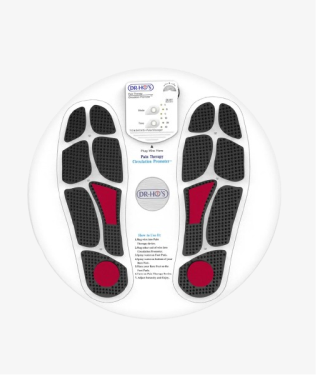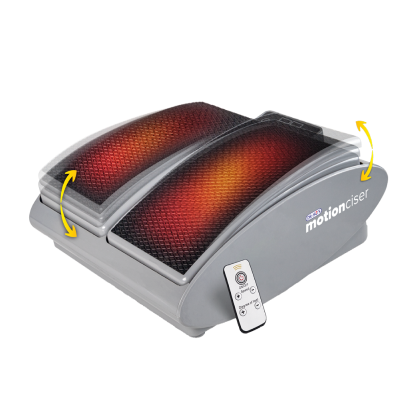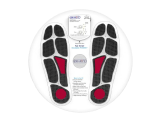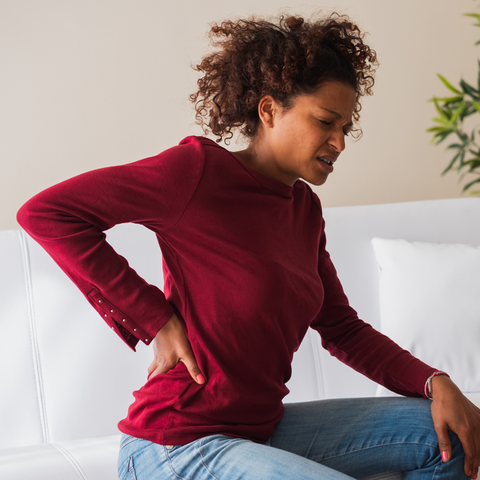What causes lower back pain? Understanding the most common condition affecting adults
Lower back pain affects nearly everyone at some point in their lives. In fact, research shows that up to 84% (J Clin Med) of people will experience lower back pain during their lifetime, making it one of the most universal health challenges we face. The economic impact is staggering too—in the United States alone, lower back pain accounts for an estimated $200 billion (StatPearls) in annual healthcare costs and represents a leading cause of physician visits.
Your lower back, or lumbar spine, bears an enormous responsibility. Unlike other regions of your spine, this area contains only five vertebrae, yet these bones must support the entire weight of your upper body while enabling complex movements like bending, twisting, and lifting. Between each vertebra sit intervertebral discs. They’re rubbery, shock-absorbing pads that cushion the bones and protect the delicate nerves running through your spinal column.
This heavy workload makes your lower back particularly vulnerable to stress, strain, and wear over time. The discs can degenerate, muscles can become strained, and the intricate network of ligaments supporting your spine can become injured. Understanding what causes lower back pain (and recognizing that you're far from alone in experiencing it) is the first step toward finding effective relief and preventing future episodes.

What are the different types of lower back pain?
Before exploring specific causes, it's important to understand that not all lower back pain is the same. Healthcare providers typically classify lower back pain into several distinct types, each with different characteristics and treatment approaches.
Acute vs. chronic lower back pain
-
Acute lower back pain develops suddenly and typically lasts from a few days to several weeks. This type often results from a specific incident, like lifting something heavy, making an awkward movement, or experiencing a minor injury. The good news is that most people with acute back pain experience significant improvement relatively quickly, with studies showing a 58% reduction in pain and disability within the first month (BMJ).
-
Chronic lower back pain persists for 12 weeks or longer, even after the original injury has healed. Research indicates that up to 23% of adults with lower back pain develop chronic symptoms (StatPearls), which often require more comprehensive treatment approaches including physical therapy, psychological support, and sometimes specialized pain management techniques.
Mechanical vs. non-mechanical pain
-
Mechanical lower back pain stems from problems with the spine's structure and movement. This includes muscle or ligament strains, disc problems, and joint issues. The vast majority of lower back pain falls into this category.
-
Non-mechanical lower back pain results from conditions not directly related to spine movement, such as infections, tumors, or inflammatory diseases. While these causes are much less common, they often require immediate medical attention.
Localized vs. radiating pain
-
Localized pain remains confined to your lower back area. You might feel aching, stiffness, or sharp pain, but it doesn't travel to other parts of your body.
-
Radiating pain spreads beyond your lower back, often traveling down into your buttocks, hips, or legs. The most well-known example is sciatica, where pain shoots down the back of your leg due to irritation of the sciatic nerve.
What causes lower back pain?
Understanding the causes of lower back pain reveals why this condition is so remarkably common. Research provides fascinating insights into the underlying reasons people develop back pain, with some findings that might surprise you.
The reality of non-specific lower back pain
Perhaps the most important fact about lower back pain is this: 85-95% of people who seek medical care for lower back pain do not have a specific, identifiable anatomical cause (IASP). This type of pain is called "non-specific lower back pain," and it represents the overwhelming majority of cases seen in primary care settings.
This doesn't mean the pain isn't real or significant—it simply means that advanced imaging like MRIs or X-rays often don't reveal a clear structural problem causing the symptoms. Instead, the pain typically results from a complex interaction of factors, including muscle tension, minor ligament irritation, movement patterns, and sometimes psychological stress.
Specific identifiable causes
While most lower back pain is non-specific, healthcare providers can identify clear anatomical causes in a small percentage of cases:
-
Inflammatory conditions like ankylosing spondylitis affect approximately 5% of people with lower back pain (IASP). These conditions cause ongoing inflammation in the spine and often produce morning stiffness that improves with movement.
-
Disc-related issues, such as herniated discs that press on nerves and cause radiating pain, account for about 4-5% of cases (IASP). These often develop gradually due to age-related wear or can result from specific injuries involving twisting or heavy lifting.
-
Degenerative disk disease affects the intervertebral discs as they naturally lose height, flexibility, and water content with age. While this is a normal part of aging, it can contribute to pain, stiffness, and reduced mobility in some individuals.
-
Osteoporotic vertebral fractures are responsible for 0.7-4.5% of cases and become more common with advancing age, particularly in people with weakened bones due to osteoporosis (IASP).
-
Serious underlying conditions, including cancer and infections, are rare, accounting for 0.0-0.7% and 0.01% of cases, respectively (IASP). While uncommon, these conditions require immediate medical attention and typically present with additional warning signs like unexplained weight loss, fever, or severe nighttime pain.
Common triggers and contributing factors
Even when no specific anatomical cause can be identified, certain triggers and factors consistently contribute to lower back pain episodes:
-
Muscle strains and ligament sprains represent the most frequent immediate causes. These can result from lifting something too heavy, making an awkward movement, or even simple activities like sneezing or bending over when your muscles aren't prepared.
-
Degenerative changes occur naturally as we age. Intervertebral discs lose height and flexibility over time through a process called degenerative disc disease, facet joints develop arthritis, and the overall structure of the spine changes. While these changes are normal parts of aging, they can contribute to pain and stiffness.
-
Movement and posture patterns play significant roles. Poor lifting techniques, prolonged sitting (especially more than five hours daily), and maintaining awkward postures repeatedly can stress the structures of your lower back and contribute to pain development.
-
Women-specific factors contribute to the higher prevalence rates seen in females:
-
Menstrual cycles can trigger lower back pain due to hormonal fluctuations that affect ligament laxity and increase inflammation. Many women experience cyclical lower back pain that coincides with their menstrual periods.
-
Pregnancy creates multiple contributing factors including weight gain that shifts the center of gravity forward, hormonal changes that loosen ligaments throughout the body, and postural adaptations that can strain the lower back. Back pain during pregnancy affects up to 70% of expectant mothers (Hippokratia).
-
Lifestyle factors, including physical fitness level, overall health, smoking, and excess weight, all influence your risk of developing lower back pain and your body's ability to recover from episodes.
What are the risk factors for developing lower back pain?
Certain factors significantly increase your likelihood of experiencing lower back pain. Understanding these risk factors can help you take preventive measures and recognize when you might be particularly vulnerable.
Gender and age patterns
Research reveals striking differences in how lower back pain affects different populations. Women consistently report a higher prevalence of lower back pain than men across all age groups. In adults aged 65 and older, studies show a median prevalence of 30.6% for men compared to 53.3% for women (QIMS).
Several factors contribute to higher rates in women, including:
-
Biological influences such as hormonal fluctuations, particularly during menstruation, pregnancy, and menopause
-
Pregnancy-related changes, including weight gain, shifted center of gravity, and hormonal effects on ligaments
-
Structural differences in pelvic anatomy and spine curvature
-
Occupational factors as women are more likely to work in jobs requiring prolonged sitting or repetitive movements
Age also plays a crucial role, with prevalence increasing steadily and peaking in the 50-55 year age range (WHO). The highest rates of both prevalence and disability impact occur in the seventh and eighth decades of life, as cumulative wear and tear, decreased bone density, and reduced muscle strength combine to increase vulnerability.
Occupational and lifestyle risk factors
Your daily activities and work environment significantly influence your lower back pain risk:
-
Occupational hazards include jobs requiring heavy lifting, frequent bending, prolonged standing, or extended periods of sitting. Research specifically identifies frequent exposure to awkward postures and sitting for more than five hours per day as factors associated with higher recurrence rates.
-
Physical fitness level directly impacts your risk. Weak abdominal and back muscles cannot properly support your spine, while poor flexibility limits your ability to move safely through daily activities.
-
Lifestyle factors, including smoking (which reduces blood flow to spinal discs), excessive alcohol consumption, and limited physical activity, all increase your risk of developing lower back pain and slow recovery when episodes occur.
Psychological and social factors
Mental health and social circumstances also influence lower back pain development and recovery:
-
Stress, anxiety, and depression affect how your body processes pain signals and can contribute to muscle tension and poor sleep quality, both of which can trigger or worsen lower back pain.
-
Work satisfaction and social support impact your resilience and recovery ability. People with high job stress, poor workplace relationships, or limited social support networks often experience more severe and longer-lasting episodes.
How to recognize lower back pain symptoms
Lower back pain symptoms can vary dramatically from person to person and even between different episodes in the same individual. Recognizing the full range of symptoms helps you understand what you're experiencing and communicate effectively with healthcare providers.
Physical symptoms
Pain characteristics can range from a dull, constant ache to sharp, shooting sensations. You might experience:
-
Localized discomfort that stays in your lower back
-
Radiating pain that travels into your buttocks, hips, or down your legs
-
Pain that worsens with certain movements like bending, lifting, or twisting
-
Discomfort that improves or worsens in specific positions
Stiffness and mobility issues often accompany back pain. You may find it difficult to:
-
Stand up straight after sitting for extended periods
-
Move freely through your normal range of motion
-
Get comfortable in bed or when trying to sleep
-
Perform routine activities like putting on shoes or getting dressed
Muscle spasms can occur suddenly, causing intense, involuntary muscle contractions that severely limit movement and cause significant pain.
Neurological symptoms
When lower back problems affect nerves, you might experience:
-
Numbness or tingling in your legs, feet, or toes
-
Weakness in one or both legs
-
Changes in reflexes that healthcare providers can detect during examination
-
Sciatica—sharp, shooting pain that travels down the back of your leg, sometimes reaching your foot
Functional impact symptoms
Lower back pain often affects your daily life in broader ways:
-
Difficulty concentrating due to persistent discomfort
-
Sleep disruption from inability to find a comfortable position
-
Reduced activity levels and avoidance of certain movements
-
Changes in mood and energy levels
What are some relief options for lower back pain?
The encouraging news about lower back pain is that most episodes improve significantly with appropriate treatment. Research shows that between 39% and 90% of patients recover within six weeks (CMAJ), depending on the specific condition and treatment approach. Understanding your options helps you choose the most effective strategies for your situation.
Immediate relief and self-care
Most people with lower back pain start with self-management strategies, and research supports this approach for many cases:
-
Rest and activity modification provide initial relief, but complete bed rest isn't recommended. Instead, avoid activities that worsen your pain while staying as active as possible within comfortable limits.
-
Ice and heat therapy can provide temporary relief. Apply ice for 15-20 minutes several times daily during the first 48 hours to reduce inflammation, then switch to heat to promote blood flow and muscle relaxation.
-
Over-the-counter medications including NSAIDs (like ibuprofen) and acetaminophen can help manage pain and inflammation during acute episodes.
Advanced electrical stimulation technology
For those seeking more targeted relief that works with the body's natural healing processes, advanced electrical stimulation offers a scientifically backed approach. DR-HO'S options include:
-
Triple Action Back Belt - 4-in-1 TENS Belt for Back Pain: DR-HO’S Triple Action Back Belt is a wearable back support with a built in nerve and muscle stimulator that not only supports your back, but also helps to relieve your back pain and sciatica pain using our patented AMP Pain Relief technology.
-
Pain Therapy System 4-Pad - Essential Package: This portable and drug-free medical device seamlessly integrates TENS, EMS, and NMES technology with cutting-edge AMP Technology, allowing you to manage your pain effortlessly wherever you are. Its 4 pads provide gentle pulse therapy and provide flexibility for treating other areas.
A TENS unit offers a non-invasive, drug-free approach to managing and relieving pain and tension. TENS therapy works through several mechanisms to help release tight muscle knots and restore healthy muscle function. DR-HO'S devices take TENS therapy to the next level by combining four powerful technologies into our AMP 4-in-1 Technology:
-
TENS (Transcutaneous Electrical Nerve Stimulation): Sends low-voltage electrical impulses through your skin to stimulate sensory nerve endings and disrupt pain signals before they reach your brain, providing immediate relief.
-
EMS (Electrical Muscle Stimulation): Causes muscles to contract and relax rhythmically, which can help release tight knots and improve blood circulation to the area.
-
NMES (Neuromuscular Electrical Stimulation): Targets specific nerve pathways to stimulate muscle contractions, helping to re-educate muscles that have become dysfunctional.
-
Auto-Modulating Pulses: This proprietary system continuously varies the electrical impulses, ensuring your body doesn't become accustomed to a single pattern. This helps ensure sustained effectiveness throughout your treatment and prevents the diminishing returns often experienced with conventional devices.
Learn more about pad placement for lower back pain.
Exercise and physical therapy
Gentle stretching and strengthening exercises help restore flexibility and build the core strength necessary to support your spine. Focus on:
-
Core strengthening exercises that target deep abdominal muscles
-
Hip flexor and hamstring stretches to reduce lower back tension
-
Low-impact activities like walking or swimming to promote circulation
Physical therapy provides professional guidance for exercise programs tailored to your specific condition and helps address movement patterns that may contribute to recurring episodes.
Professional treatments
For severe back pain, several professional options can complement other pain relief methods :
-
Manual therapy, including chiropractic adjustments, osteopathic manipulation, therapeutic massage, and acupuncture, can help restore proper spinal alignment and reduce muscle tension.
-
Prescription medications may be necessary for severe pain or when over-the-counter options aren't effective. These might include stronger pain relievers, muscle relaxants, or anti-inflammatory medications.
-
Injection therapies such as epidural steroid injections can provide targeted relief for specific conditions like herniated discs or spinal stenosis.
The latter two should be discussed with your healthcare provider.
When should you see a doctor for lower back pain?
While most lower back pain improves with time and appropriate self-care, certain situations require immediate medical attention or professional evaluation.
Emergency warning signs
Seek immediate medical care if you experience lower back pain along with any of these "red flag" symptoms:
Neurological emergencies:
-
Loss of bladder or bowel control
-
Severe weakness in one or both legs
-
Numbness in the groin or genital area
-
Progressive neurological symptoms that worsen rapidly
Signs of serious underlying conditions:
-
Fever accompanying your back pain
-
Severe abdominal pain in addition to back pain
-
Back pain following significant trauma, like a car accident or major fall
-
Unexplained weight loss along with persistent back pain
When to schedule a non-urgent evaluation
-
Consider seeing a healthcare provider within a few days to weeks if:
-
Your pain persists or worsens despite appropriate self-care measures after 1-2 weeks, especially if it's preventing you from performing normal daily activities.
-
You have concerning risk factors, including:
-
Age over 55 with new-onset back pain
-
History of cancer, especially if experiencing new or different back pain
-
A compromised immune system that increases infection risk
-
Use of corticosteroid medications
-
Your symptoms are severe or unusual, such as:
-
Pain that's significantly worse at night and doesn't improve with rest
-
Severe morning stiffness that lasts more than 30 minutes
-
Pain accompanied by numbness or tingling that doesn't resolve
What to expect during your visit
Healthcare providers typically begin with a thorough history and physical examination. They'll ask about:
-
When and how your pain started
-
Activities that worsen or improve your symptoms
-
Previous episodes of back pain
-
Current medications and treatments you've tried
Physical examination tests for:
-
Range of motion limitations
-
Areas of tenderness or muscle spasm
-
Neurological function including reflexes and sensation
-
Specific maneuvers that reproduce or relieve your symptoms
Medical history review covers:
-
Previous episodes and treatments
-
Family history of spine problems
-
Occupational and lifestyle factors
-
Overall health status and medications
Based on their findings, they may recommend imaging studies like X-rays or MRIs, though these aren't always necessary for initial evaluation.
How do you prevent recurrence and manage long term lower back pain?
Given that about 33% of patients experience a recurrence within one year after recovering from an acute episode (Phys Ther), prevention and long-term management strategies are crucial for maintaining back health and quality of life.
Understanding recurrence patterns
Lower back pain has a frustrating tendency to return. Research identifies specific factors associated with higher recurrence rates, including frequent exposure to awkward postures and sitting for more than five hours per day. This reality makes it essential to develop comprehensive strategies that address both immediate treatment and long-term prevention.
Prevention strategies for first-time and recurring episodes
Maintain proper body mechanics:
-
Lift with your legs, not your back, keeping objects close to your body
-
Avoid twisting while lifting—pivot with your feet instead
-
Use mechanical aids when moving heavy objects
-
Take frequent breaks from prolonged sitting or standing
Strengthen your core support system:
-
Develop strong abdominal muscles that support your spine
-
Include hip and glute strengthening exercises in your routine
-
Practice exercises that improve flexibility in your hips and hamstrings
-
Maintain good cardiovascular fitness through regular low-impact activities
-
Ensure your workspace supports good posture with proper chair height and computer positioning
-
Use ergonomic tools and supports when needed
-
Create sleep environments that support spinal alignment with appropriate mattresses and pillows
-
Modify home activities to reduce back stress
Long-term management for chronic conditions
For the 23% of adults (StatPearls) who develop chronic lower back pain symptoms, ongoing management becomes a way of life rather than a temporary treatment:
Develop a comprehensive pain management plan that may include:
-
Regular use of electrical stimulation therapy, like a DR-HO'S TENS unit
-
Consistent exercise routines that maintain strength and flexibility
-
Stress management techniques, including mindfulness or meditation
-
Regular check-ins with healthcare providers to adjust treatments as needed
Build lifestyle habits that support spine health:
-
Maintain a healthy weight to reduce stress on spinal structures
-
Don't smoke, as it impairs blood flow to spinal discs
-
Prioritize quality sleep, which is essential for tissue healing and pain management
-
Stay socially connected and maintain mental health, as isolation and depression can worsen pain perception
-
Keep effective treatments readily available for quick use during acute episodes
-
Identify early warning signs that allow for prompt intervention
-
Maintain relationships with healthcare providers for rapid access when needed
-
Have workplace and family plans in place for times when pain limits your activities
The role of ongoing support
Living successfully with recurrent or chronic lower back pain often requires ongoing support rather than seeking a permanent "cure." Products like DR-HO'S Triple Action Back Belt provide valuable tools for long-term management, offering temporary relief that can be used consistently to support your body's natural processes and maintain quality of life.
The key to long-term success lies in accepting that lower back pain may be an ongoing challenge while developing the tools, knowledge, and support systems necessary to manage it effectively. With the right approach, most people can maintain active, fulfilling lives despite episodes of lower back pain.
Manage and relieve lower back pain on your own terms!
Back pain is a very difficult thing to cure outright. But don’t be discouraged! By committing to a healthier lifestyle devoted to physical and emotional self-care, it is possible to manage back pain effectively on a day-to-day basis. Hopefully, the tips above will help you manage and relieve your lower back pain on your terms!
Disclaimer: DR-HO'S content is intended for informational purposes only and should not be taken as medical advice. Please consult a certified medical professional for diagnosis and treatment recommendations.
Learn more about Back Pain on the DR-HO’S Blog!
The Triple Action Back Belt Product Guide
3 Ways DR-HO’S Triple Action Back Belt Helps Relieve Back Pain at Home
What is a Back Spasm? We Answer Common Questions About Back Spasm Pain
The Decompression Belt Product Guide
How DR-HO’S Triple Action Back Belt Outperforms Other Back Support Belts
Mckenzie Back Exercises: A Video Breakdown for Back Pain Sufferers
Poor Posture & Back Pain: X Ways to Find Lower Back Support & Pain Relief
Back Decompression Therapy: What is It | How it Works | Can it Help Back Pain
Muscle Spasms in the Lower Back: Know the Causes & How to Find Relief










